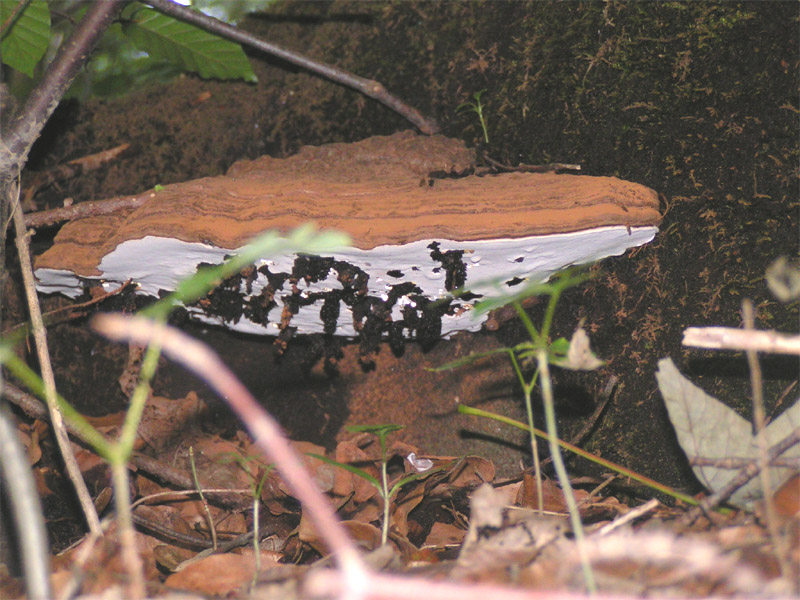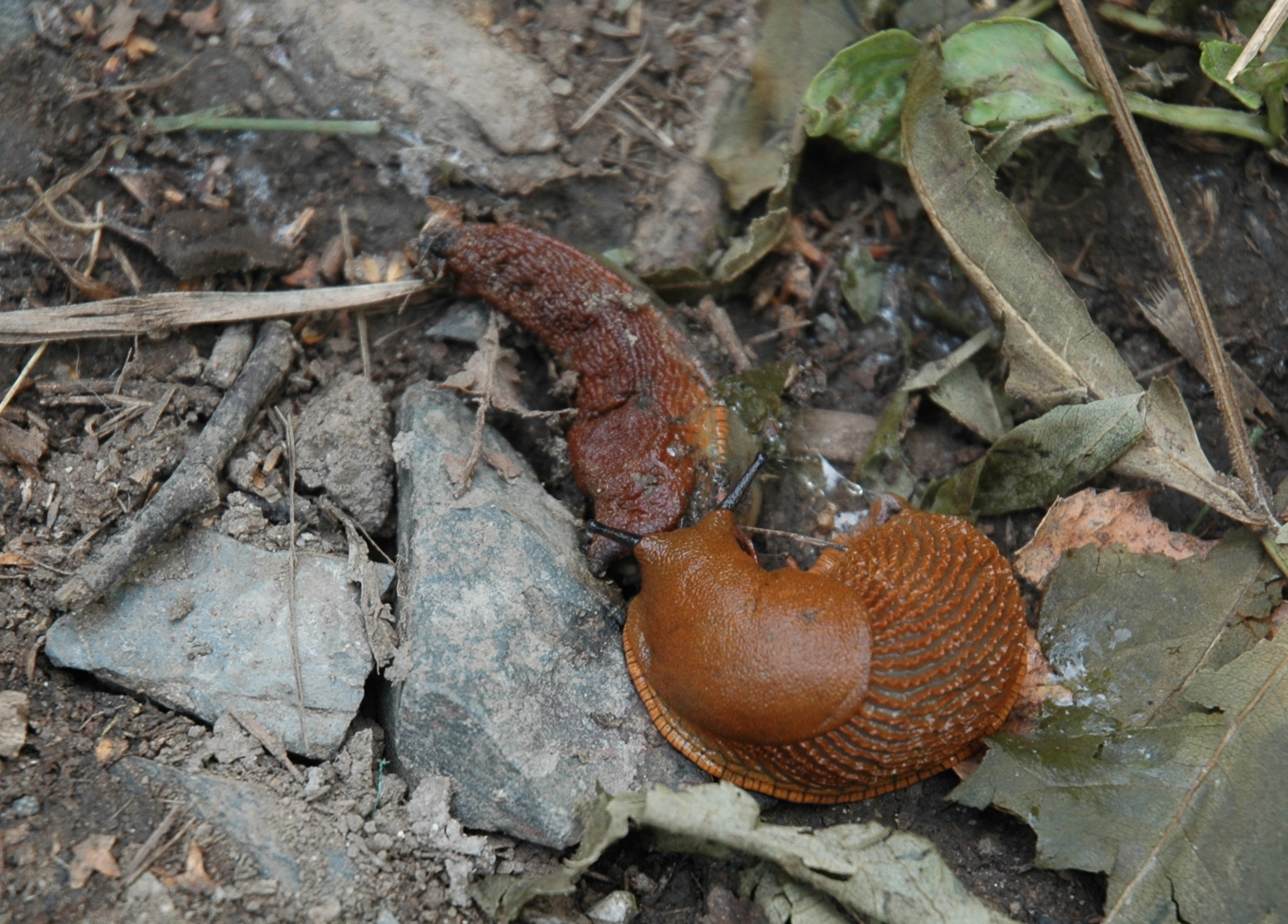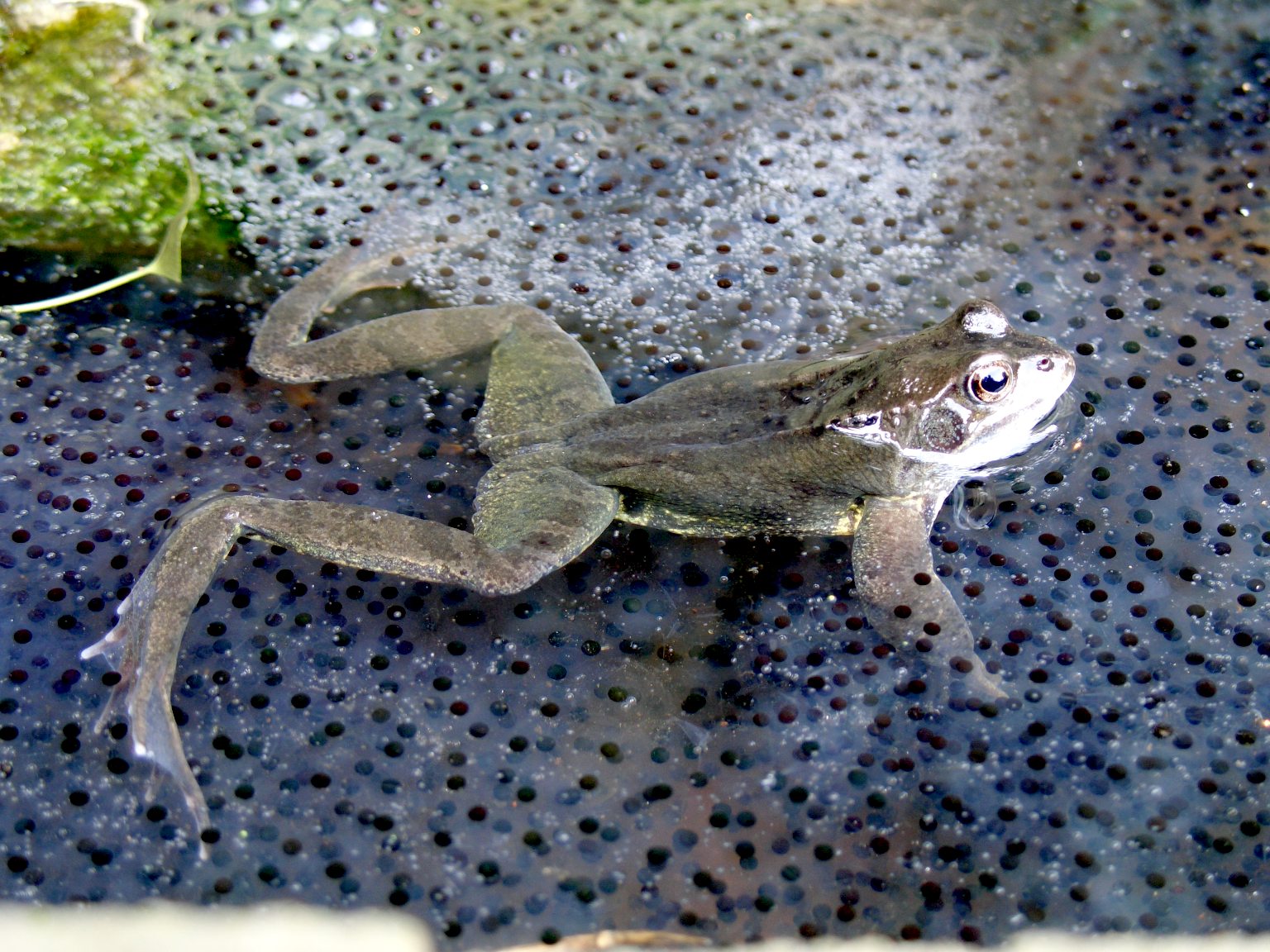|
Bolitotherus
''Bolitotherus cornutus'' is a North American species of darkling beetle known as the horned fungus beetle or forked fungus beetle. All of its life stages are associated with the fruiting bodies of a wood-decaying shelf fungus, commonly ''Ganoderma applanatum'', '' Ganoderma tsugae'', and ''Ganoderma lucidum''. Description Adults are brown, armored beetles, long. They are sexually dimorphic; males have two sets of horns and females lack horns. Males use their horns, clypeal and thoracic, to compete for mates. Unlike many species of scarab beetles that exhibit male dimorphism for horns with major and minor morphs,Emlen DJ (1996) Artificial selection on horn length body size allometry in the horned beetle ''Onthophagus acuminatus'' (Coleoptera: Scarabaeidae). Evolution 50: 1219–1230. doi:10.2307/2410662 male ''B. cornutus'' possess a continuous range of horn and body sizes.Conner JK (1988) Field measurements of natural and sexual selection in the fungus beetle, ''Bolitotherus ... [...More Info...] [...Related Items...] OR: [Wikipedia] [Google] [Baidu] |
Darkling Beetle
Darkling beetle is the common name for members of the beetle family Tenebrionidae, comprising over 20,000 species in a cosmopolitan distribution. Taxonomy ''Tenebrio'' is the Latin generic name that Carl Linnaeus assigned to some flour beetles in his ''10th edition of Systema Naturae'' 1758–59. The name means "lover of darkness"; the English language term 'darkling' means "characterised by darkness or obscurity"; see also English 'tenebrous', figuratively "obscure, gloomy." Many Tenebrionidae species inhabit dark places; in genera such as ''Stenocara'' and ''Onymacris'', they are active by day and inactive at night. The family covers a varied range of forms, such that classification presents great difficulties. These eleven subfamilies were listed in the 2021 review by Bouchard, Bousquet, ''et al.'', updating a similar catalog from 2005.Bouchard, Patrice; Lawrence, John F.; Davies, Anthony E.; Newton, Alfred F. (2005"Synoptic Classification of the World Tenebrionidae (Insect ... [...More Info...] [...Related Items...] OR: [Wikipedia] [Google] [Baidu] |
Ganoderma Applanatum
''Ganoderma applanatum'' (the artist's bracket, artist's conk, artist's fungus or bear bread) is a bracket fungus with a cosmopolitan distribution. Description ''Ganoderma applanatum'' is parasitic and saprophytic, and grows as a mycelium within the wood of living and dead trees. It grows in single, scattered, or compound formations. It forms fruiting bodies that are wide, long and thick, hard as leather, and woody-textured. The upper surface of the fruiting body appears brown, covered with reddish-brown conidia. The underside is white but stains brown. The fruiting bodies are perennial, and may persist for multiple years, increasing in size and forming new layers of pores as they grow. These layers can be distinguished in a cross section or from observation of the concentric rings on the upper surface of the fruiting body. This allows the fruiting body's age to be determined using the same method as tree rings. Brown Basidiospore, spores are released from the pores on the ... [...More Info...] [...Related Items...] OR: [Wikipedia] [Google] [Baidu] |
Hibernation
Hibernation is a state of minimal activity and metabolic reduction entered by some animal species. Hibernation is a seasonal heterothermy characterized by low body-temperature, slow breathing and heart-rate, and low metabolic rate. It is most commonly used to pass through winter months – called overwintering. Although traditionally reserved for "deep" hibernators such as rodents, the term has been redefined to include animals such as bears and is now applied based on active metabolic suppression rather than any absolute decline in body temperature. Many experts believe that the processes of daily torpor and hibernation form a continuum and use similar mechanisms. The equivalent during the summer months is aestivation. Hibernation functions to conserve energy when sufficient food is not available. To achieve this energy saving, an endothermic animal decreases its metabolic rate and thereby its body temperature. Hibernation may last days, weeks, or months—depending on t ... [...More Info...] [...Related Items...] OR: [Wikipedia] [Google] [Baidu] |
Ganoderma
''Ganoderma'' is a genus of polypore fungi in the family Ganodermataceae that includes about 80 species, many from tropical regions. They may be called ''shelf mushrooms'' or bracket fungi and have a high genetic diversity. ''Ganoderma'' can be differentiated from other polypores because they have a double-walled basidiospore. They are used in traditional Asian medicine. Description ''Ganoderma'' are characterized by basidiocarps, which are large, perennial, woody brackets also called " conks". They are lignicolous and leathery either with or without a stem. The fruit bodies typically grow in a fan-like or hoof-like form on the trunks of living or dead trees. They have double-walled, truncate spores with yellow to brown ornamented inner layers. Taxonomy Taxonomic history The genus ''Ganoderma'' was established as a genus in 1881 by Karsten and included only one species, ''G. lucidum'' (Curtis) Karst. Previously, this taxon was characterized as ''Boletus lucidu ... [...More Info...] [...Related Items...] OR: [Wikipedia] [Google] [Baidu] |
Ground Squirrel
Ground squirrels are rodents of the squirrel family (Sciuridae) that generally live on the ground or in burrows, rather than in trees like the tree squirrels. The term is most often used for the medium-sized ground squirrels, as the larger ones are more commonly known as marmots (genus ''Marmota'') or prairie dogs, while the smaller and less bushy-tailed ground squirrels tend to be known as chipmunks (genus ''Tamias''). Together, they make up the "marmot Tribe (biology), tribe" of squirrels, Marmotini, a clade within the large and mainly ground squirrel subfamily Xerinae, and containing six living genera. Well-known members of this largely Holarctic group are the marmots (''Marmota''), including the American groundhog, the chipmunks, the susliks (''Spermophilus''), and the prairie dogs (''Cynomys''). They are highly variable in size and Morphology (biology), habitus, but most are remarkably able to rise up on their hind legs and upright posture, stand fully erect comfortably for pr ... [...More Info...] [...Related Items...] OR: [Wikipedia] [Google] [Baidu] |
Cannibalism
Cannibalism is the act of consuming another individual of the same species as food. Cannibalism is a common ecological interaction in the animal kingdom and has been recorded in more than 1,500 species. Human cannibalism is also well documented, both in ancient and in recent times. The rate of cannibalism increases in nutritionally poor environments as individuals turn to members of their own species as an additional food source.Elgar, M.A. & Crespi, B.J. (1992) ''Cannibalism: ecology and evolution among diverse taxa'', Oxford University Press, Oxford ngland New York. Cannibalism regulates population numbers, whereby resources such as food, shelter and territory become more readily available with the decrease of potential competition. Although it may benefit the individual, it has been shown that the presence of cannibalism decreases the expected survival rate of the whole population and increases the risk of consuming a relative. Other negative effects may include the increa ... [...More Info...] [...Related Items...] OR: [Wikipedia] [Google] [Baidu] |
Offspring
In biology, offspring are the young creation of living organisms, produced either by sexual reproduction, sexual or asexual reproduction. Collective offspring may be known as a brood or progeny. This can refer to a set of simultaneous offspring, such as the chick (young bird), chicks hatched from one clutch (eggs), clutch of eggs, or to all offspring produced over time, as with the brood (honeybee), honeybee. Offspring can occur after mating, artificial insemination, or as a result of cloning. Human offspring (lineal descendant, descendants) are referred to as children; male children are sons and female children are daughters (see Kinship). Overview Offspring contains many parts and properties that are precise and accurate in what they consist of, and what they define. As the offspring of a new species, also known as a child or f1 generation, consist of genes of the father and the mother, which is also known as the parent generation. Each of these offspring contains numerous ... [...More Info...] [...Related Items...] OR: [Wikipedia] [Google] [Baidu] |
Perognathinae
Perognathinae is a subfamily of rodents consisting of two genera of pocket mice. Most species live in complex burrows within the deserts and grasslands of western North America, They feed mostly on seeds and other plant parts, which they carry in their fur-lined cheek pouches to their burrows. Description There are about 26 members of the subfamily Perognathinae divided into two genera. They are all small rodents. Adaptations include partially fused vertebrae in the neck, short forelimbs, and much enlarged bullae (bubble-shaped bones in the skull). The dental formula is 1/1, 0/0, 1/1, 3/3 making twenty teeth in total. The molars have two-lobed cusps. The upper incisors are grooved and the enamel on the molars is quickly worn away by chewing leaving the dentine exposed. The cheek teeth have roots. Fur-lined cheek pouches are a feature across the family Heteromyidae. They have openings near the mouth and extend backwards along the sides of the neck. The fur on the animal's body i ... [...More Info...] [...Related Items...] OR: [Wikipedia] [Google] [Baidu] |
Georg Wolfgang Franz Panzer
Georg Wolfgang Franz Panzer (31 May 1755 – 28 June 1829) was a German physician, botanist and entomologist. He produced a book on the insect fauna of Germany, illustrated with hand-coloured plates by Jacob Sturm which was produced in 109 parts over a 17 year period beginning in 1796. Life and work Panzer was born at Etzelwang in the Upper Palatinate where his father Georg Wolfgang (1729–1805) was a pastor and a distinguished bibliographer, whose ''Annales Typographici'' were published between 1793 and 1803.. His mother Rosine Helene (d. 1806) was the daughter of Johann Jakob Jantke. He studied in Nuremberg from 1760 to 1772 followed by studies in medicine which included botany at Erlangen and Altdorf from 1774. His doctoral dissertation of 1777 was titled ''De Dolore''. He continued studies at Vienna, Strasbourg and Switzerland and was admitted to the Collegium medicum in 1780 in Nuremberg. He married Magdalena Clara Vogel in 1780. He promoted the use of cowpox vaccinatio ... [...More Info...] [...Related Items...] OR: [Wikipedia] [Google] [Baidu] |
Frass
Frass refers loosely to the more or less solid excreta of insects, and to certain other related matter. Definition and etymology ''Frass'' is an informal term and accordingly it is variously used and variously defined. It is derived from the German word ''Fraß'', which means the food takeup of an animal.M. Clark and O. Thyen. The Oxford-Duden German Dictionary. Publisher: Oxford University Press 1999. The English usage applies to excreted residues of anything that insects had eaten, and similarly, to other chewed or mined refuse that insects leave behind. It does not generally refer to fluids such as honeydew, but the point does not generally arise, and is largely ignored in this article. Such usage in English originated in the mid-nineteenth century at the latest. Modern technical English sources differ on the precise definition, though there is little direct contradiction on the practical realities. One glossary from the early twentieth century speaks of "...excrement; us ... [...More Info...] [...Related Items...] OR: [Wikipedia] [Google] [Baidu] |
Camouflage
Camouflage is the use of any combination of materials, coloration, or illumination for concealment, either by making animals or objects hard to see, or by disguising them as something else. Examples include the leopard's spotted coat, the battledress of a modern soldier, and the leaf-mimic katydid's wings. A third approach, motion dazzle, confuses the observer with a conspicuous pattern, making the object visible but momentarily harder to locate. The majority of camouflage methods aim for crypsis, often through a general resemblance to the background, high contrast disruptive coloration, eliminating shadow, and countershading. In the open ocean, where there is no background, the principal methods of camouflage are transparency, silvering, and countershading, while the bioluminescence, ability to produce light is among other things used for counter-illumination on the undersides of cephalopods such as squid. Some animals, such as chameleons and octopuses, are capable of Active ... [...More Info...] [...Related Items...] OR: [Wikipedia] [Google] [Baidu] |






